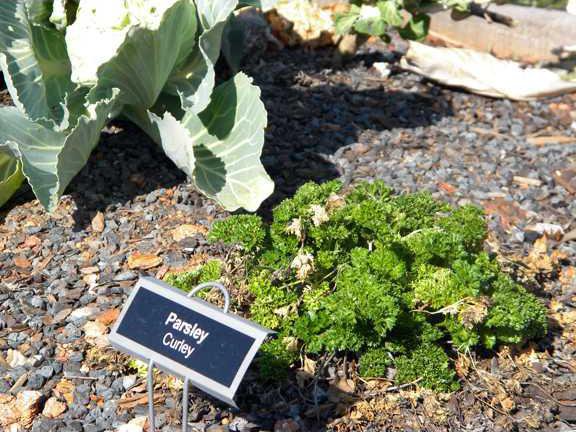More information
Contact: hcmgs.com, 770-535-8293
Although their area of expertise falls more in the horticultural field, the Hall County Master Gardeners have taken on two important projects at the Northeast Georgia History Center.
"One of things that we do is participate with civic endeavors by planting and maintaining gardens and planting trees, those sorts of things," said Ed Rigel, Hall County Master Gardener.
"This just kind of follows behind that."
For the last year, the group has been working to maintain and establish components of the Northeast Georgia History Center Gardens, which can be found at the historic facility at 322 Academy St., Gainesville.
"The Cherokee Garden is a 6-year-old project, I took it over about a year ago," Rigel said.
"And then last summer, we were asked to start the Victory Garden. I was asked to chair that as well and went back to the Master Gardeners and got permission for the project. I said, ‘Well if we're going to be doing them both, let's just call them the (Northeast Georgia History Center Gardens)."
It may seem unusual to combine history and gardens, but here, it works.
"They both work well with the history center because you've got the historical Cherokee Garden, which has crops that the Cherokee Indians would've used," said Master Gardener Wanda Cannon. "And then there's the Victory Garden. The concept for that dates back to the World War II era."
During the early 1940s, at the height of WWII, the government began encouraging citizens to plant their own fruits and vegetables. The gardens not only provided fresh produce for families, it also freed up supplies — like delivery trucks — for war efforts.
The Cherokee Garden is planted near Chief White Path's cabin on the history center's property. The cabin was built in the 1700s and was constructed by the parents of the chief, who was a leader of his Cherokee Indian tribe. The cabin's furnishings are an example of what a Cherokee farmstead may have been like, prior to the Trail of Tears, when the group was removed from their land and relocated to the Midwest.
Since the Victory Garden was planted in the fall, the gardeners researched cool-weather crops that would thrive in Georgia. Ultimately, the group came up with a list of herbs and vegetables like carrots, radishes, beets and brussels sprouts.
The selections were planted in September.
Although some of the items didn't survive the frost, several heads of lettuce, broccoli and cabbage are still sprouting bountifully. The parsley, rosemary and collard greens also survived the chill.
"We're going to replant it in the spring," Cannon said.
When the weather warms slightly, the gardeners are planning to plant a variety of crops like cantaloupe, beans, peppers and zucchini.
Over the years, the Master Gardeners have taken on landscaping projects with Habitat for Humanity, established the Gardens on Green at the Hall County Board of Education and worked with the Smithgall Woodland Gardens in Hall County among other things.
"We like beautifying the community if it's a project we can handle, but a big piece of the pie with Master Gardeners is education. By establishing (public) gardens, we hope there's an educational opportunity there," Cannon said.
"You have children and families that come out and we want to provide a horticultural, educational experience for people. That's really what it's all about."
Master gardeners is a volunteer program offered through the Hall County Cooperative Extension office. Currently, there are about 150 local Master Gardeners, who contributed more than 16,000 hours of community service in 2010 alone.

